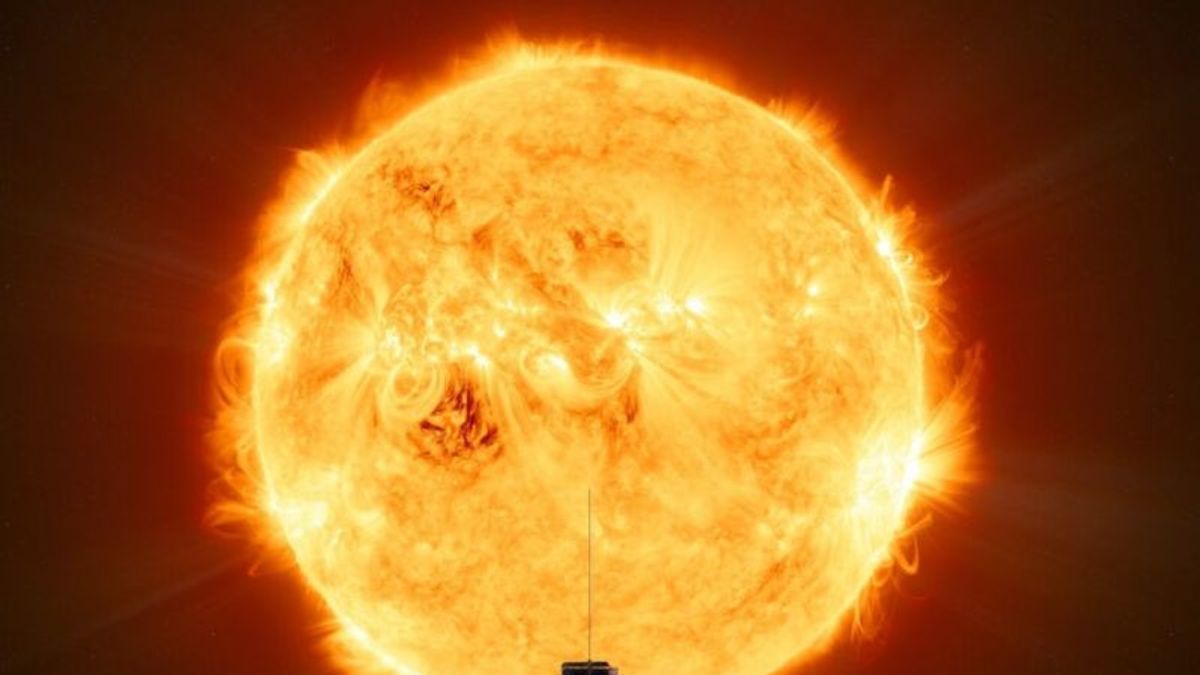JAKARTA - ESA (European Space Agency) and NASA (The National Aeronautics and Space Administration) managed to photograph the Sun with the highest resolution of a full disk, outer atmosphere and corona ever taken from the Extreme Ultraviolet Imager (EUI), as reported by ESA on Saturday, which quoted between.
Another image, taken by the Spectral Imaging of the Coronal Environment (SPICE) instrument, represents the first full Sun image of its kind in 50 years, and by far the best, taken at the Lyman-beta wavelength of the ultraviolet light emitted by hydrogen gas.
The image was taken when the Solar Orbiter was at a distance of about 75 million kilometers, half way between our world and its parent star. Solar Orbiter itself is an international co-operation space mission between ESA and NASA.
The EUI high-resolution telescope takes images with such a high spatial resolution that at such close distances a mosaic of 25 individual images is required to cover the entire Sun.
Images were taken one after another, the full image taken over four hours as each mosaic took about 10 minutes, including time for the spacecraft to point from one segment to the next.
In total, the final image contains more than 83 million pixels in a 9148 x 9112 pixel grid. In comparison, this image has ten times better resolution than a 4K TV screen can display.
The EUI imaged the sun at a wavelength of 17 nanometers, in the extreme ultraviolet region of the electromagnetic spectrum. This reveals the Sun's upper atmosphere, the corona, which has a temperature of about 1 million degrees Celsius.
At 2 o'clock (near the Earth image for scale) and 8 o'clock position on the edge of the Sun, dark filaments can be seen protruding from the surface. These 'bulges' tend to erupt, throwing large amounts of corona gas into space and creating 'space weather' storms.
In addition to the EUI, the SPICE instrument also records data during the crossing. These also need to be put together as a mosaic.
SPICE is designed to track layers in the sun's atmosphere from the corona, to a layer known as the chromosphere, closer to the surface. The instrument does this by looking at different wavelengths of extreme ultraviolet light coming from different atoms.
In the SPICE series of images, purple corresponds to hydrogen gas at 10,000 degrees Celsius, blue to carbon at 32,000 degrees Celsius, green to oxygen at 32,000 degrees Celsius, yellow to neon at 630,000 degrees Celsius.
This will allow solar physicists to track the unusually powerful eruption that occurred in the corona down through the lower layers of the atmosphere. This photo will also allow them to study one of the most puzzling observations about the Sun: how temperature rises through the rising layers of the atmosphere.
Usually the temperature will drop as you move away from the hot object. But above the Sun, the corona reaches one million degrees Celsius, while its surface is only about 5000 degrees Celsius.
Investigating this mystery is one of the main scientific goals of the Solar Orbiter.
This image was taken on March 7, 2022, exactly as the Solar Orbiter crosses the Sun-Earth line, so it can be compared with Earth-bound and cross-calibrated solar instruments. This will make it easier to compare results from different instruments and observatories in the future.
On March 26, the Solar Orbiter reached another mission milestone, its first near perihelion. The spacecraft is now inside the orbit of Mercury, the inner planet, taking the highest-resolution image of the Sun. It also records solar wind data from particles flowing out of the Sun.
And this is just the beginning, over the next few years spacecraft will repeatedly fly this close to the Sun. It will also gradually increase its orientation to view previously unobserved polar regions of the Sun.
Solar Orbiter itself is a space mission of international cooperation between ESA and NASA.
The English, Chinese, Japanese, Arabic, and French versions are automatically generated by the AI. So there may still be inaccuracies in translating, please always see Indonesian as our main language. (system supported by DigitalSiber.id)













